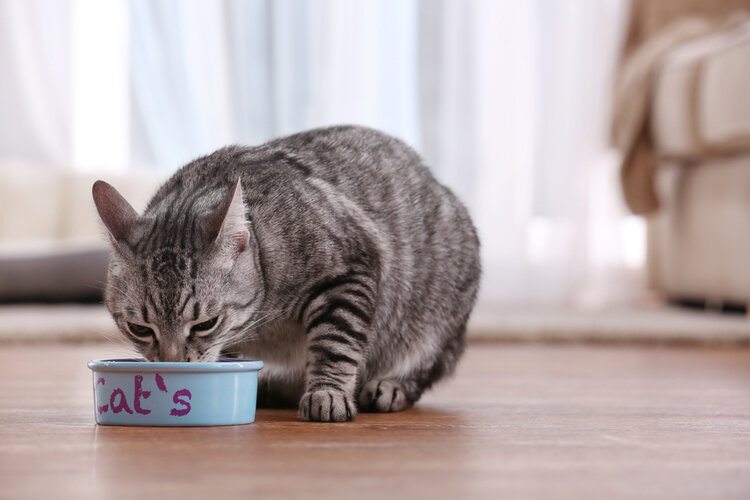Click to Skip Ahead
Most cat owners understand the importance of feeding high-quality food to their cats, but they pay less attention to the quality and features of the bowls they fill. Your cat will eat and drink from their bowls several times a day, and if they suffer an allergic or toxic reaction to the bowl material, it could lead to serious illness. Some cats are picky and may enjoy eating from stainless steel but not drinking from it. They might refuse to eat their meals in anything other than ceramic.

The 3 Types of Cat Bowls
Food bowls should be large enough to hold a meal and allow unrestricted access to the food. The opening should not be too narrow or restricted in any way. Water bowls need to be large enough to hold a reasonable amount of water, but for some animals, you must ensure that the water is not too deep. Small animals can climb inside and may not be able to get out again.
Buy bowls specifically for kittens or puppies, and upgrade once they get older. Note that some food and water bowls may only be available in a restricted range of materials.
1. Elevated Bowls
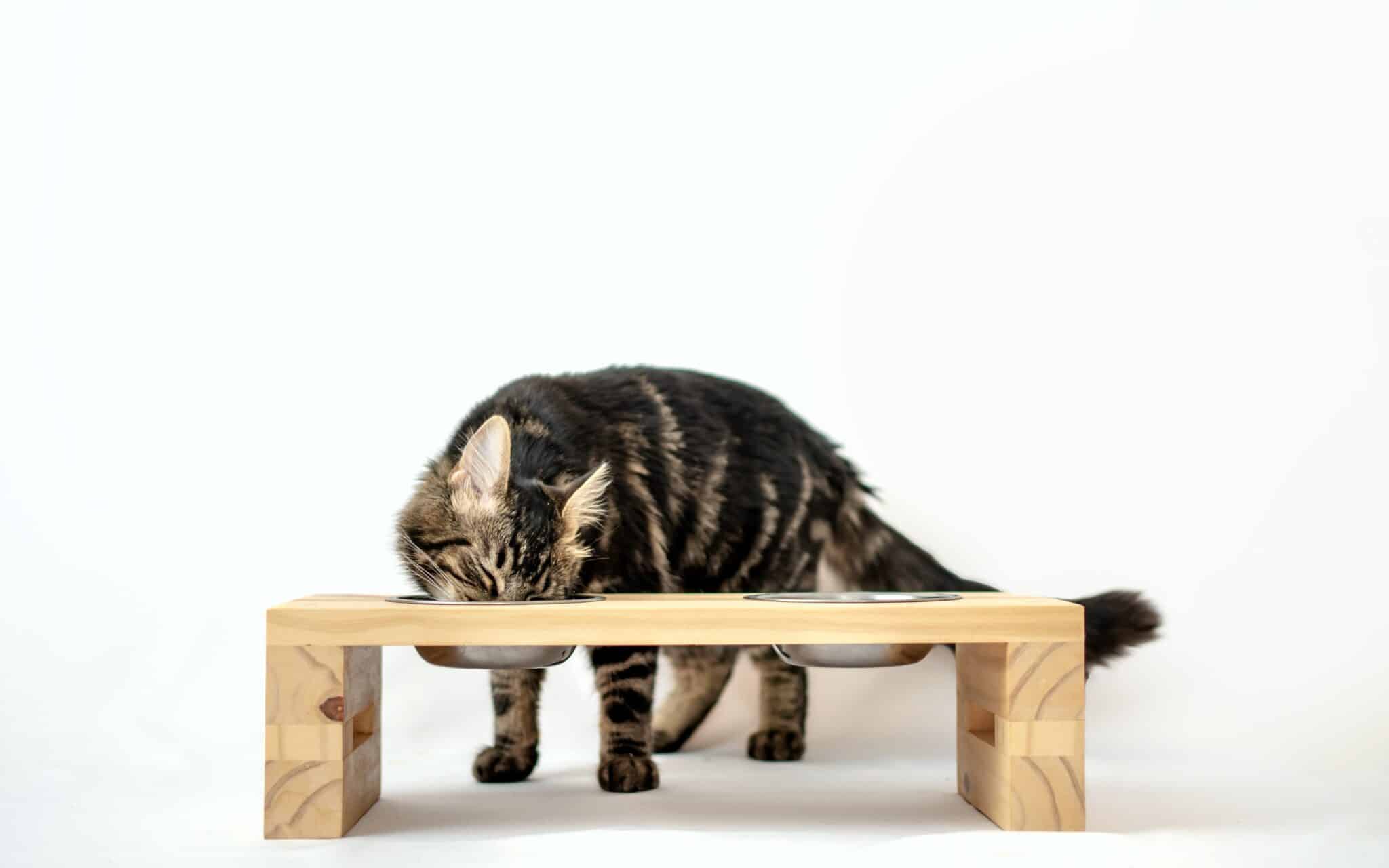
Elevated feeders enable your cat to eat without dipping their head down to the ground level. This reduces strain on the neck. However, research suggests that large and giant breeds are more likely to develop bloat when using this type of bowl.
2. Automatic Feeders
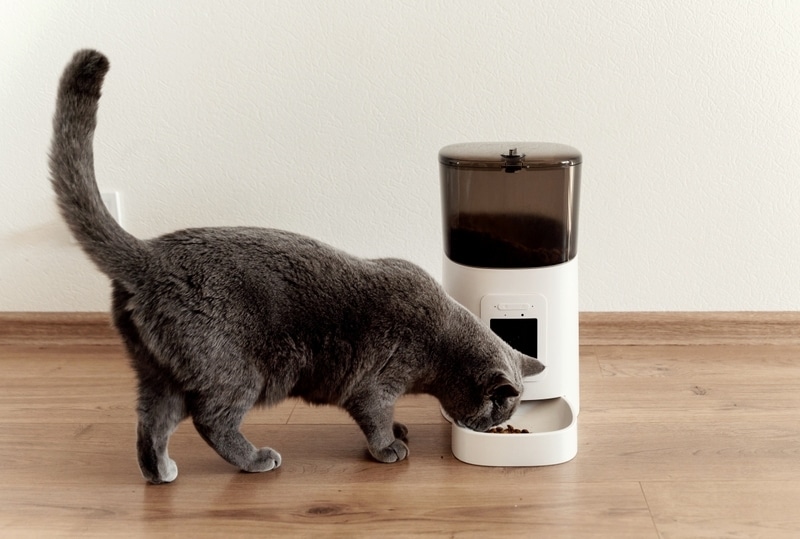
Automatic feeders deliver a set amount of food at specific times or intervals. They can be used if you go to work during the day or to ensure you don’t forget to feed your cat. Although these bowls may be made from any material, it is common to find plastic variants.
3. Water Fountains
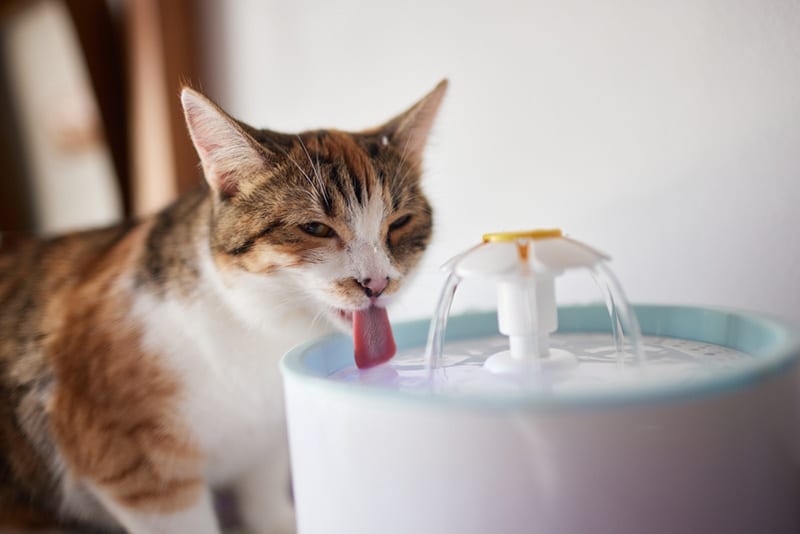
Similarly, water fountains tend to be made from plastic, though the better quality models are stainless steel. Some animals do not like to drink stagnant water, while others guzzle bowls of water a day. A well-designed water fountain reminds your pet that they need to drink, offers fresh and constantly filtered water, and can be beneficial when you’re working.
Our Favorite Cat Water Fountain
Making sure your cat drinks enough water can require a little creativity and the right fountain choice! A nicely made product like Hepper's Stainless Steel Cat Water Fountain will encourage your cat to stay hydrated by providing fresh, flowing water. We particularly like this model because it's easy to clean and offers excellent triple filtration, multiple flow modes, and a large capacity.
- Premium 304-Grade Stainless Steel - This metal cat water fountain is hygienic, with superior...
- Serene & Healthy Cat Drinking Fountain Experience - With whisper-quiet pumping & an advanced...
- Say Goodbye to Dehydration - Provide your cat with a constant source of flowing water with this...
At Catster, we’ve admired Hepper for many years and decided to take a controlling ownership interest so that we could benefit from the outstanding designs of this cool cat company!

Top 3 Cat Bowl Materials
Bowls are primarily made of three materials: plastic, stainless steel, or ceramic.
1. Plastic
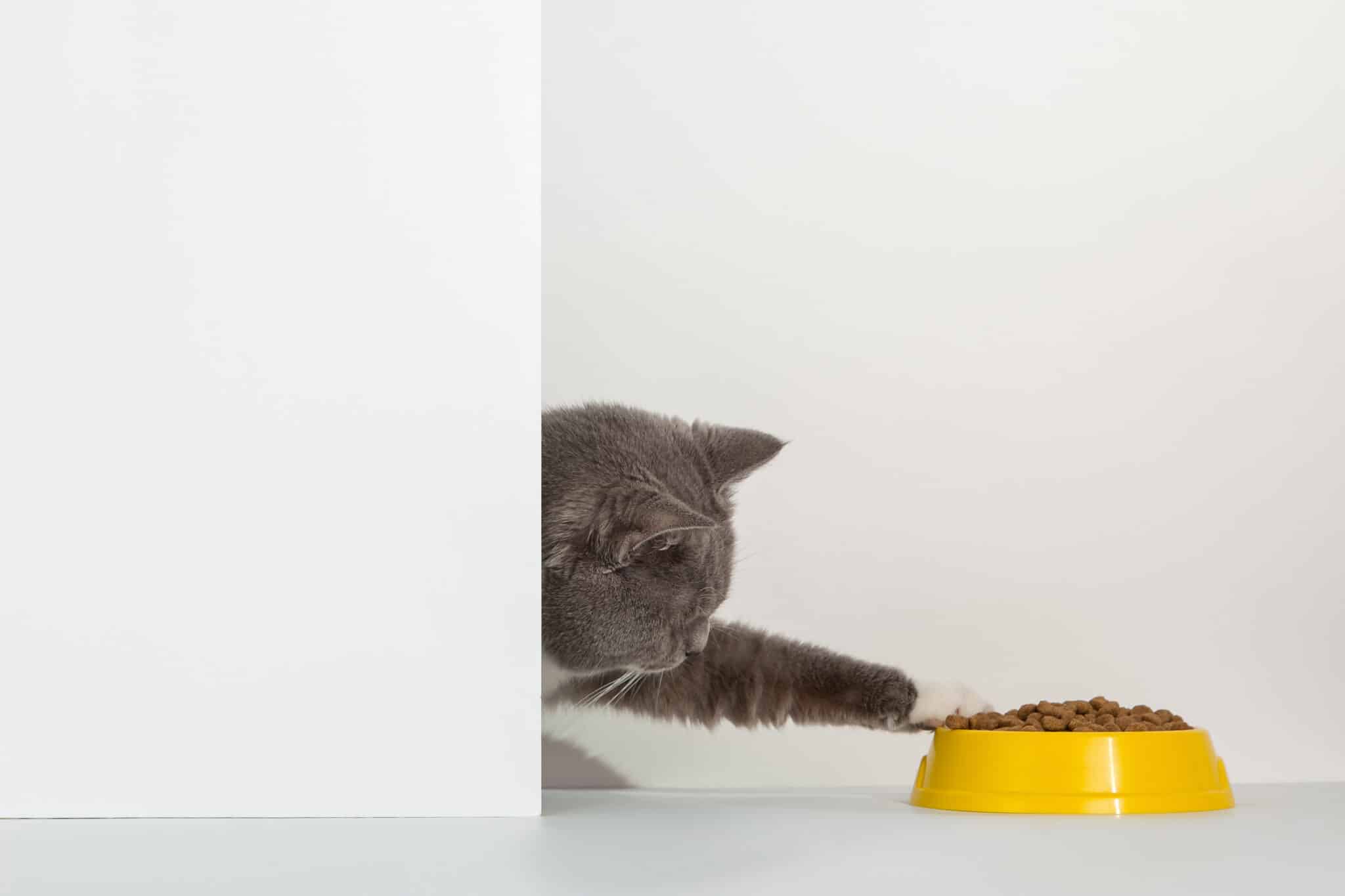
Plastic is everywhere. It is cheap, easy to make, and light enough to ship and move around. However, it is also the least healthy option, contains potentially dangerous chemicals, and can be quite flimsy and lead to ingestion.
- Cheap: Plastic became the prevalent consumer material of the 20th century because of its low cost. Creating a plastic bowl costs a fraction of a ceramic or steel bowl, and some of the savings are passed on to customers. Plastic bowls are available for a few dollars.
- Lightweight: Plastic is easy to move around and can be stored anywhere. Its lightweight nature makes it equally suitable for travel.
- Flexible: Plastic can be molded into any shape, it can be constructed with one, two, or more walls, and it can be thick or thin, according to the manufacturing requirements. It is also flexible.
- Harmful Content: Plastic can contain BPA, phthalates, and other potentially harmful materials. They can adversely affect the health and development of your pet since they can chew on and consume small amounts of plastic over time.
- Impossible to Clean: Abrasive damage to plastic causes small gouges and marks that harbor bacteria. No matter how well you clean the bowl, the bacteria can remain.
- Light: Being lightweight is not only a benefit of plastic but also a drawback. Your cat can easily push a plastic bowl around while eating, and it can topple over and spill the liquid and food.
2. Stainless Steel
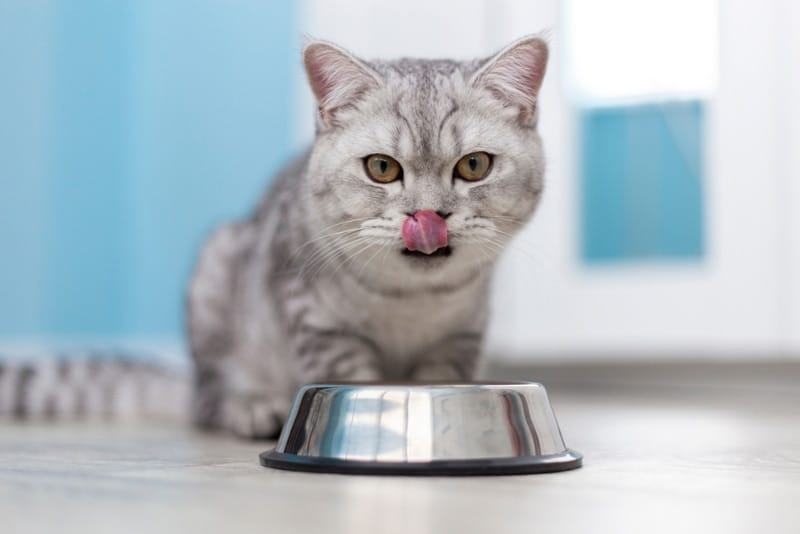
Stainless steel is widely considered the healthiest and best material for cat food bowls. There are different grades of stainless steel. Try to ensure that the steel being used is considered food-grade. Also, avoid thin stainless-steel bowls since they’re lighter and easier for cats to move around.
- Durable: Stainless steel can be banged around and only suffer a few minor dints. Choose one with a rubber base to prevent slippage and further reduce damage.
- Dishwasher Safe: Because it does not suffer the same abrasive damage as plastic, stainless steel is easy to clean and maintain. It can even be put in the dishwasher, but the rubber base may prevent that on some models.
- Inexpensive: Stainless steel is cheap, and bowls made from the material can be bought for a few dollars.
- Safe: If made using food-grade stainless steel, it is safe to eat from and should not leach any dangerous substances into the food.
- Noisy: Stainless steel is noisy, especially if you have a vigorous eater. It will rattle around when used by excited pets, hence the need for a rubber non-slip base.
- Different Grades of Material: There are different grades of stainless steel, and you must ensure that the bowl you choose is safe. If the manufacturer fails to disclose the grade of stainless steel used, it would be best to avoid it.
Choosing the right food and water bowls for our feline companions can pose certain challenges for pet owners. After careful consideration and research, we have found a bowl that we cannot recommend highly enough! The Hepper NomNom Cat Bowl provides a chic and innovative solution that supports cat-specific needs, such as shallow bowls and a subtle elevation that fosters whisker relief and posture comfort, as well as improves digestion.
It features an elegant contemporary design with a wide wrap-around tray aimed at minimizing any messes from ending up on your floor! Furthermore, this bowl is entirely dishwasher safe, so pet owners can spend more time with their cats instead of cleaning up after them. Discover why the Hepper NomNom Cat Bowl is right for both you and your kitty by clicking here. At Catster, we’ve admired Hepper for many years and decided to take a controlling ownership interest so that we could benefit from the outstanding designs of this cool cat company! Our Favorite Cat Bowl
3. Ceramic
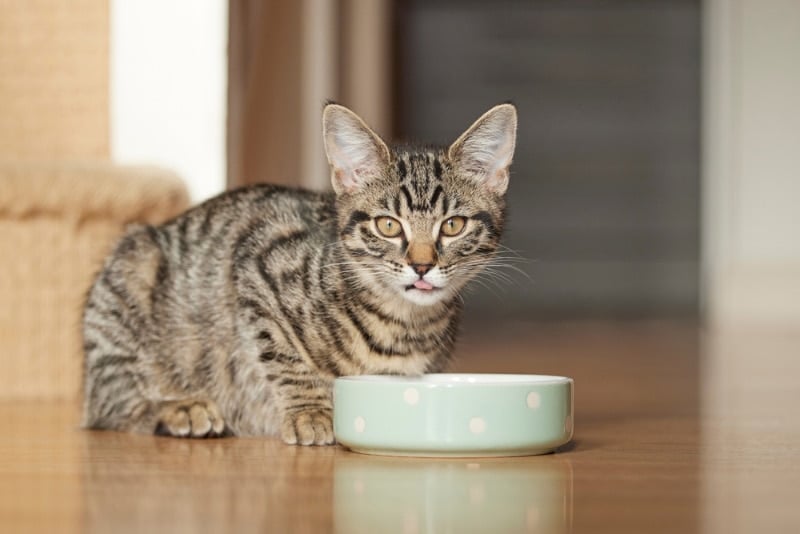
Ceramic bowls come in many sizes and designs. They are more expensive than plastic and metal bowls, but some owners prefer the heft of the ceramic option.
- Stable: Ceramic is heavy, and a ceramic bowl can prevent your cat from pushing their food around the floor and toppling the water bowl.
- Design Options: Ceramics can be glazed and coated and come in various shapes, sizes, and designs, so there is a suitable option for all.
- Need Regular Cleaning: As a porous material, ceramic needs regular cleaning, and it can be difficult to scrub away baked-on food.
- Easily Damaged: Although it’s heavy, ceramic is more easily damaged than stainless steel. Drop a thick ceramic bowl, and you could smash the bowl and the floor underneath.
- Varying Quality: Some glazes and paints are lead-based, which is dangerous, and some will flake away into your pet’s food and water. Ensure that you buy good-quality ceramic.

Conclusion
Stainless steel is considered the best material for cat bowls. Food-grade steel is safe to eat and drink from, inexpensive, and easy to clean. It is also less harmful to the environment than plastic, but it can be noisy, and you should ensure that you get a good grade of stainless steel.
Check out these articles on different types of cat bowls:
Featured Image Credit: Africa Studio, Shutterstock

